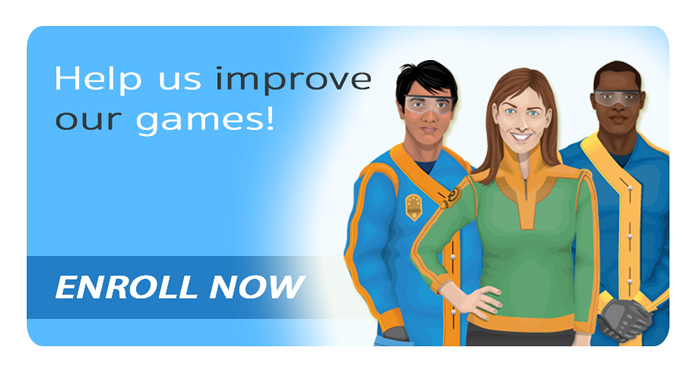Not to worry. Our team has created a Flash Game Archive. There you will find instructions on how to download the standalone Flash Player,
along with links to download all games within the Web Adventures catalog and play them offline.

NOTE: This synopsis is provided as an overview for TEACHERS. We advise teachers NOT to hand this out to the students prior to playing the adventure since much of the suspense will be eliminated.
All synopses provided below are in Adobe Acrobat format:
It is the year 2254, twelve years after the end of the Great Plague that ran through the Earth's population killing millions and causing the collapse of civilization. An elite group of scientists known as the RECONSTRUCTORS team is charged with preventing the spread of infectious diseases in this bleak time.
Beta, the Reconstructors' chief medical officer, begins the mission by welcoming the student to the On-line Reconstructor Base (ORB). With her is Eureka, the medical information robot, and Delta, the robot scout. They explain to the student that he/she has been recruited into the Neuropolis Center for Disease Control (NCDC). The student must pass five challenges in order to become a certified NCDC agent.
The student proceeds to a room with five doors. Behind each door is one of the five challenges. The student can access the following five challenges in any order:
The Germ Theory of Disease holds that germs or microorganisms cause infectious diseases. In this challenge, the student will perform experiments to identify the germ responsible for a fungal disease with the help of a famous scientist, Dr. Robert Koch. He/she will use the following rules or postulates worked out by Dr. Koch in the late 1800s for establishing whether a specific germ causes a particular infectious disease:
1. The suspected pathogen must be present in every case of the disease.
2. The suspected pathogen must be isolated from the host and grown in pure culture.
3. The disease must be reproduced when a pure culture of the suspected pathogen is inoculated into a healthy susceptible host.
4. The same pathogen must be recovered from the newly infected host.
The student visits a containment unit that houses the six types of infectious agents or pathogens: bacterium, fungus, helminth, prion, protozoa, and virus. The student sees a cartoon picture of each agent and reads information on diseases caused by that category of germ. Next, the student plays a game in which he/she has to sort infectious diseases by the type of infectious of agent that causes them. Below is a chart of the information that is presented with each germ.
Pathogen |
Picture |
Interview |
Bacterium |
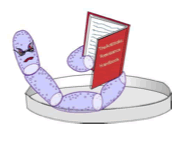 |
Name: Bacillus anthracis AKA: "The Powder" Personal Interview: Yeah, I'm a bacterium. What about it? I cause anthrax, so what. It's not that deadly, if you don't inhale me. My bacteria relatives can cause botulism, tuberculosis and typhoid. Now those are some mean diseases. Come on, let me out! I won't hurt anyone. |
Fungus |
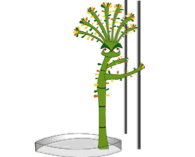 |
Name: Tinea pedis AKA: "The Itch" Personal Interview: Heh! Heh! Heh! What's up? I am a fungus. I am one of the fungi that cause athlete's foot, just a little itch between the toes. My fellow fungi are just waiting to cause histoplasmosis, ringworm, and thrush. Heh! Heh! Heh! You just wait; fungi are everywhere! |
Virus |
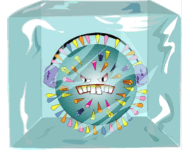 |
Name: Influenza Virus Type A: AKA: "The Flu" Personal Interview: Hey, it's cold in this freezer! If I thaw I'll invade your cells and take them over! You'll be sorry if my friends find out! They cause trouble worldwide with AIDS, measles, hepatitis, and Ebola. You better be afraid! Not all of us can be prevented with a vaccine! |
Protozoan |
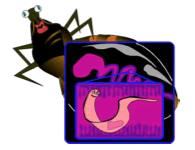 |
Name: Trypanosoma cruzi AKA: "Chagas disease" Personal Interview: Hi ya, good looking! Would you like a kiss from my friend? One kiss, come on. While he captures your attention with his kiss, he can deposit me on your skin through his feces. If I can make it to your mouth, eyes or an open wound then you'll get Chagas Disease. Maybe you'd be more interested in getting a disease that my fellow protozoa can cause like amoebic dysentery and malaria. All perfectly parasitic, I assure you. |
Helminth |
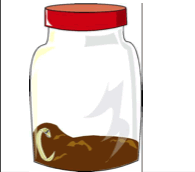 |
Name: Enterobus vermicularis AKA: "The End" Personal Interview: Oh, a victim! I mean a visitor. I am a pinworm. I exit through the back end of people so it's nice to see a face now and then. My helminth cousins, the tapeworm, roundworm, and hookworm would so enjoy your company. You should give them a call. I promise you'll never forget a visit from a helminth. |
Prion |
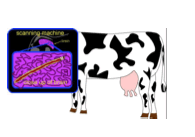 |
Name: Prion Protein PrPsc AKA: "The crazy cow" Personal Interview: Hello, there. Don't waste time with the other infectious agents. If you want to see something new, talk to me. I am a prion, discovered in the 1980s. There is no cure for the diseases such as scrapie, Creutzfeldt-Jakob Disease (CJD), and mad cow disease that we prions cause. Doesn't that just make you mad? |
The student learns about the different modes of transmission for the different types of infectious agents. The students plays a game in which he/she takes on the role of one of the agents and tries to travel through the environment in order to infect a human. The student must land on items thatwill allow the agent to spread and avoid those that inhibit spread, such as pills containing antibiotics or other antimicrobial drugs. Following is a chart of the different infectious agents and transmission items.
Level |
Pathogen |
Objects That Spread Disease |
Objects That Kill Infectious Agents |
1 |
Bacterium |
Direct Contact, Food, Water, Air, Animal, Indirect Contact |
Medicine, Soap, Vaccine |
2 |
Fungus |
Direct Contact, Water, Animal, Indirect Contact |
Medicine, Soap, Vaccine |
3 |
Virus |
Medicine, Soap, Vaccine |
Medicine, Soap, Vaccine |
4 |
Protozoan |
Food, Water, Animal |
Medicine |
5 |
Helminth |
Direct Contact, Food, Water, Air, Indirect Contact |
Medicine, Soap |
6 |
Prion |
Food |
|
The student learns about the different methods the body has to fight off infectious diseases. First, students learn about the names and locations of components of the immune system. Then they progress through an animation of both nonspecific and specific immune response.
The student learns about the common treatments and preventatives for infectious disease by playing a game. In the game he/she fights each of the six types of infectious agents by choosing the appropriate treatment/preventative. Below is a chart with each pathogen and its corresponding treatment. Note that prions are not listed because there is no treatment for diseases caused by this agent, a fact that is pointed out in the game.
Pathogen |
Treatment |
Bacteria |
Anitibiotics, vaccines |
Fungi |
Anti-fungal drugs, antibiotics |
Viruses |
Anti-viral drugs, vaccines |
Protozoa |
Antibiotics |
Helminths |
Antihelmintics |
Once the student completes all five challenges, he/she takes a review quiz. Only after passing the quiz will the student be certified as a qualified NCDC agent.
Robert Koch (1843-1910) Robert Koch was born at Clausthal in the Upper Harz Mountains of Germany. He earned his MD degree in 1866. Dr. Koch made numerous contributions to early microbiology, working on the human diseases anthrax, tuberculosis, cholera, and malaria. He also studied tropical disease in cattle. In 1905, he received the Noble Prize for his work on tuberculosis.
His major contributions include identifying the cause of each disease along with recommendations to prevent their spread. Koch was very methodical and persistent in his experiments.
For a podcast of contemporary microbiologists talking about how they got into microbiology research and what they do, check out: Microbe Talk. The scientists featured are diverse in background and training. Since some interviews are a little long for middle school students, choose ones that seem particularly appropriate for your students.



